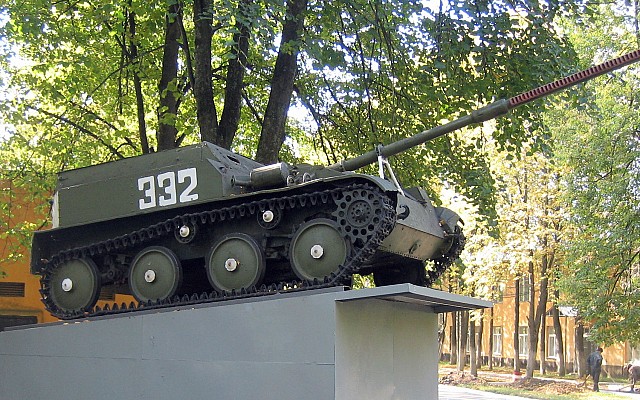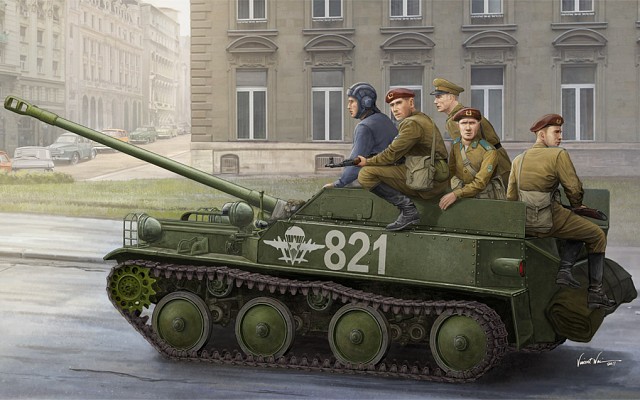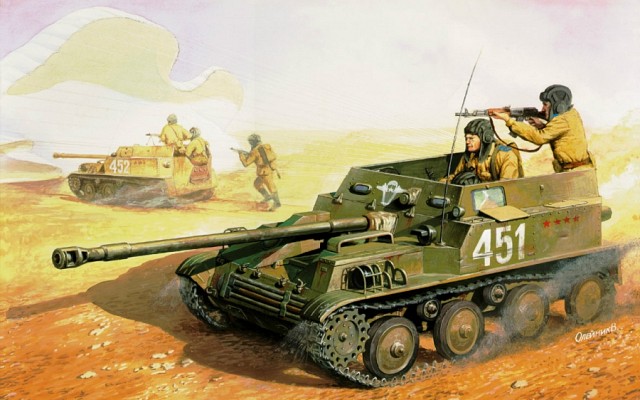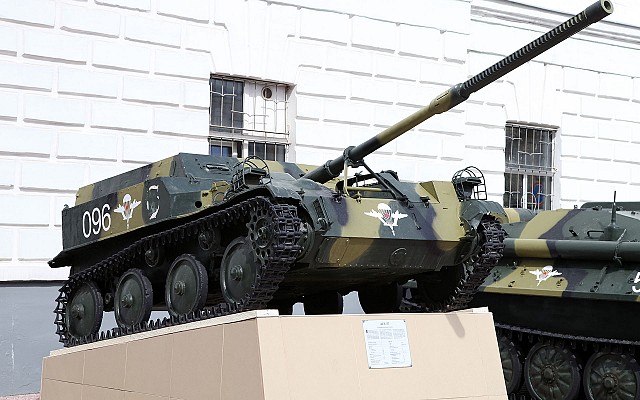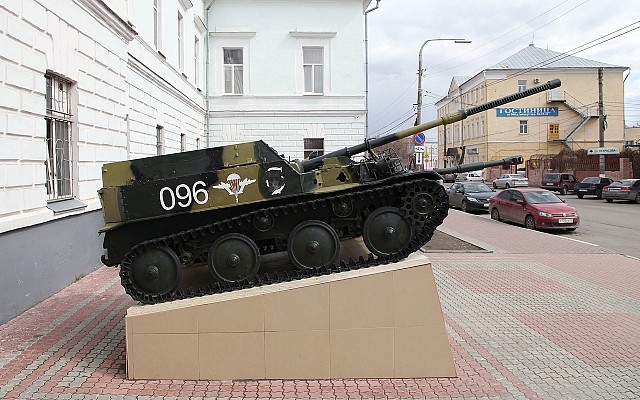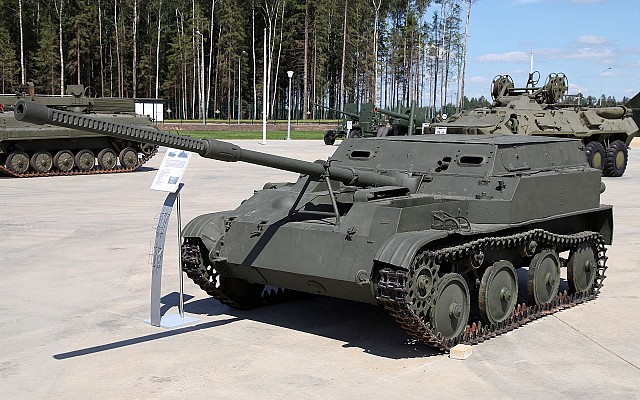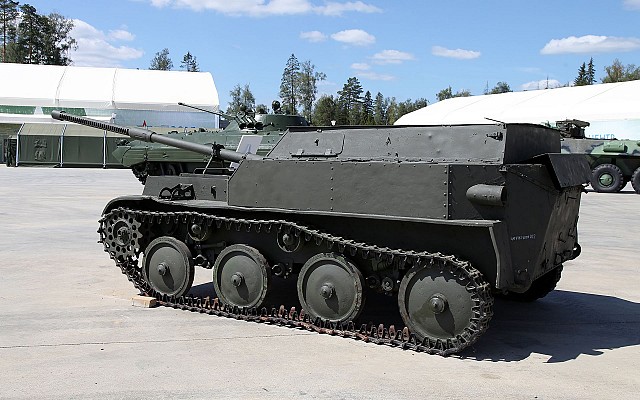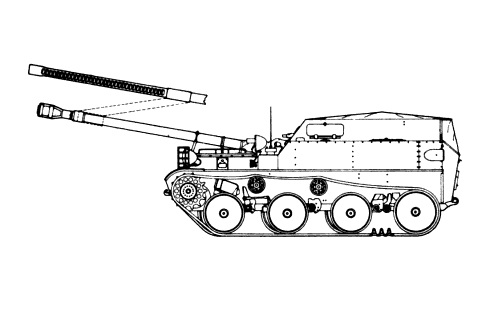ASU-57
АСУ-57
Overview
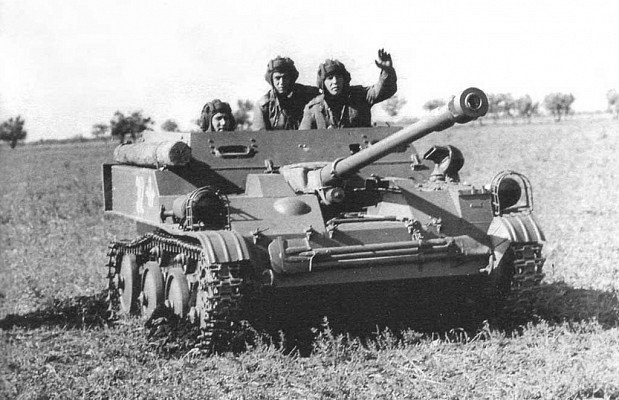
ASU-57
ASU-57 airborne self-propelled anti-tank gun in the field.
Source: Unknown author -
© Copyright lies with original owner
1949 (Soviet state trials)
Over 250 (known minimum)
Russian for "airborne self-propelled gun 57"
Obyekt 572 (GABTU index)
North Korea
East Germany
Egypt
Description
Introduction
The ASU-57 is an early Cold War era air-mobile tank destroyer of Soviet origin. It was developed in the late 1940's to provide Soviet airborne divisions with a potent anti-tank weapon. The ASU-57 entered service in 1951 and was first seen in public in the 1957 parade.
Design
The ASU-57 is a rather unique vehicle and proved difficult to design. It combines a tracked chassis with a high velocity 57mm anti-tank gun derived from the World War 2 era ZiS-2. The ASU-57 is rather small and there is little internal space for the 3 men crew. The engine and drive train are located at the front. The crew compartment is located at the rear. The gun is balanced at the center of the vehicle and fires over the frontal arc. The low silhouette makes the ASU-57 difficult to spot in a prepared and camouflaged position.
Firepower
The ASU-57 is armed with the long barrel high velocity Ch-51 rifled gun. This gun is derived from the ZiS-2 towed anti-tank gun and differs in recoil mechanism and muzzle brake. A total of 30 rounds are carried. When introduced this gun was deemed potent and was capable of destroying the various M4 Sherman variants in use with many Western nations. However, by the 1960's many M47 and M48 Patton tanks were in service and the ASU-57 could not be deemed a guaranteed effective counter, especially at longer ranges where the effectiveness of the high velocity gun drops of rapidly.
The ASU-57 can fire solid shot out to 1.1 km and sabot rounds out to 1.5 km. High explosive shells have a 0.9 km direct fire range. Theoretical rate of fire is 12 rpm, with 7 rpm being more realistic. For self-defense the crew can use the 7.62mm SG-43 machine issued with the vehicle. This can be fired from the open roof, but is normally to be used from its bipod alongside the vehicle.
Protection
The armor protection of the ASU-57 is very limited. A trade-off to keep the weight as low as possible. The steel armor is 6 mm in most places over the frontal arc, and as low as 4 mm at the sides and rear. This makes the ASU-57 vulnerable to heavy machine gun fire, and even some 7.62mm NATO rounds. The open roof allows for good visibility for the crew, but makes the ASU-57 vulnerable from artillery fire.
Mobility
The main design parameter for the ASU-57 was the ability to be air dropped alongside airborne forces. Rocket powered parachutes allow for a soft landing. This technique was mastered only in the late 1950's. The ASU-57 may be transported, and air-dropped, by An-8, An-12 and Il-76 aircraft and the large Mi-6 helicopter. The ASU-57 is powered by a small 55 hp gasoline engine derived from the GAZ M-20 Pobeda civilian saloon car. This allows for a maximum speed of 45 km/h on road and about 20 km/h off road. An amphibious version of the ASU-57 was developed and accepted for service, but never produced.
Users
In Soviet service the ASU-57 equipped airborne divisions. Each division was to be equipped with 54 vehicles each. By the early 1960's there were 245 vehicles in Soviet service, when transition to the ASU-85 began. In the 1960's and 1970's small batches of ex-Soviet vehicles were exported to Soviet allies and they served in various conflicts. Egypt used the ASU-57 in the 1967 Six Day war and Ethiopia possibly used as many as several dozen ASU-57 in the 1977 Ogaden war. North Korea possibly received as many as 200 vehicles and remains the only presumed operator. Some vehicles may be stored in Vietnam, a country known to to have large and well maintained stocks of vehicles including many World War 2 and Cold War era vehicles.
Variants
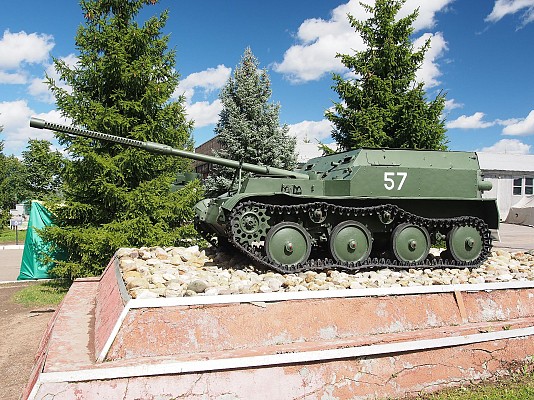
ASU-57
ASU-57 on static display at the Kubinka Tank Museum.
Source: Alf van Beem -
© Public domain
Overview of ASU-57 variants
Details
Media
Related articles
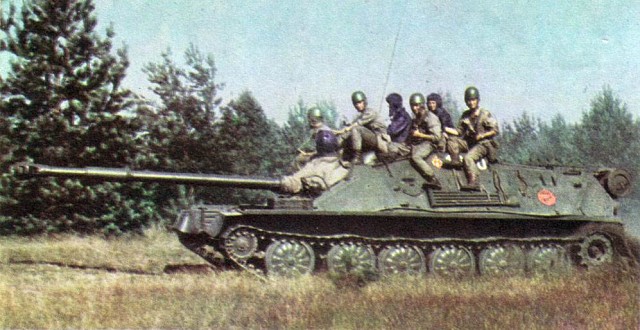
ASU-85
In Soviet service the ASU-57 was gradually replaced from 1960 onward by the larger and more capable ASU-85.
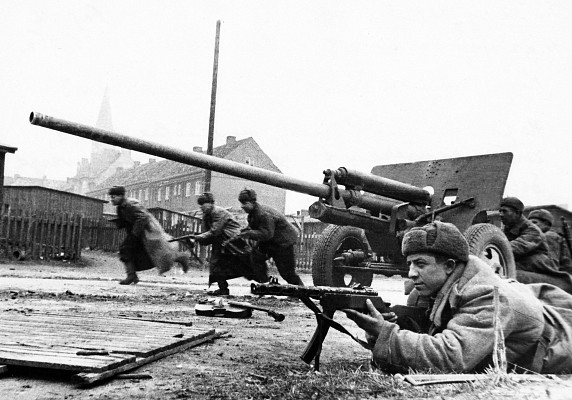
57mm ZiS-2
The ASU-57 is armed with a main gun derived from the World War 2 era ZiS-2 towed anti-tank gun. Both guns fire the same range of 57x480mm ammunition.
